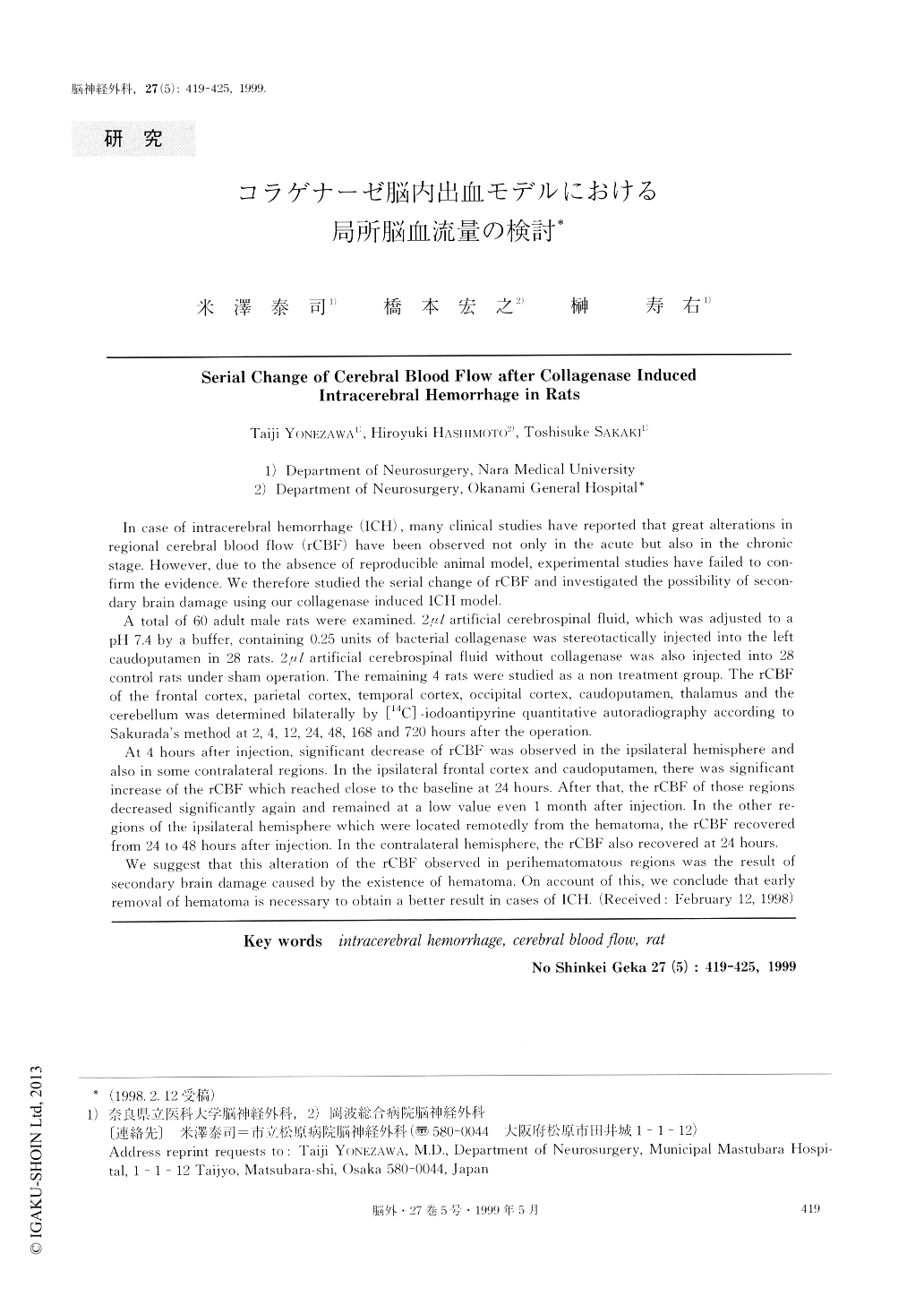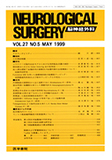Japanese
English
- 有料閲覧
- Abstract 文献概要
- 1ページ目 Look Inside
I.はじめに
現在においても脳内出血に関しては未知な部分が多く残されており,その治療,特に急性期,慢性期を問わず手術適応に関しては依然議論の多いところである.133Xe,SPECT,及びPETを用いた臨床例での検討によると,脳内出血時には多様な脳循環代謝障害が出現していると報告されている6,8,23,28,29).しかしながら,確立された脳内出血モデルがなく,基礎的研究がほとんどなされていないのが現状である.そこでわれわれは,コラゲナーゼラット脳内出血モデルを用いて,脳内出血の超急性期から慢性期にわたる局所脳血流量の経時的変化を調べることにより,脳循環動態を明らかにすることを目的として実験を行った.
In case of intracerebral hemorrhage (ICH), many clinical studies have reported that great alterations in regional cerebral blood flow (rCBF) have been observed not only in the acute but also in the chronic stage. However, due to the absence of reproducible animal model, experimental studies have failed to con-firm the evidence. We therefore studied the serial change of rCBF and investigated the possibility of secon-dary brain damage using our collagenase induced ICH model.
A total of 60 adult male rats were examined. 2μl artificial cerebrospinal fluid, which was adjusted to a pH 7.4 by a buffer, containing 0.25 units of bacterial collagenase was stereotactically injected into the left caudoputamen in 28 rats. 2μl artificial cerebrospinal fluid without collagenase was also injected into 28 control rats under sham operation. The remaining 4 rats were studied as a non treatment group. The rCBF of the frontal cortex, parietal cortex, temporal cortex, occipital cortex, caudoputamen, thalamus and the cerebellum was determined bilaterally by [14C]-iocloantipyrine quantitative autoradiography according to Sakurada's method at 2, 4, 12, 24, 48, 168 and 720 hours after the operation.
At 4 hours after injection, significant decrease of rCBF was observed in the ipsilateral hemisphere and also in some contralateral regions. In the ipsilateral frontal cortex and caudoputamen, there was significant increase of the rCBF which reached close to the baseline at 24 hours. After that,the rCBF of those regions decreased significantly again and remained at a low value even 1 month after injection. In the other re-gions of the ipsilateral hemisphere which were located remotedly from the hematoma, the rCBF recovered from 24 to 48 hours after injection. In the contralateral hemisphere, the rCBF also recovered at 24 hours. We suggest that this alteration of the rCBF observed in perihematomatous regions was the result of secondary brain damage caused by the existence of hematoma. On account of this, we conclude that early removal of hematoma is necessary to obtain a better result in cases of ICH.

Copyright © 1999, Igaku-Shoin Ltd. All rights reserved.


